Harappan Civilization
Harappan Civilization: The Bronze Age Wonder of the Indus Valley
The Harappan Civilization stands as one of humanity’s earliest and most remarkable urban societies. Flourishing along the fertile plains of the Indus River between 3300-1300 BCE, this Bronze Age marvel developed sophisticated cities with advanced sanitation systems, standardized weights, and a mysterious script that continues to baffle scholars today. Despite being contemporaneous with ancient Egypt and Mesopotamia, the Harappan Civilization remained largely unknown until the 20th century. Today, its archaeological treasures reveal a complex society that mastered urban planning, trade networks, and artistic expression thousands of years before the modern era.
History and Discovery of the Harappan Civilization
The story of the Harappan Civilization begins with its accidental discovery in the early 20th century. In 1921, archaeologist Daya Ram Sahni unearthed the ancient city of Harappa along the banks of the Ravi River in present-day Pakistan. This groundbreaking find was followed by the discovery of Mohenjo-daro by R.D. Banerjee in 1922. These excavations revealed a sophisticated urban culture that predated most known ancient civilizations, forcing historians to reconsider the timeline of human development in South Asia.
Timeline of the Harappan Civilization
- Early Harappan Phase (3300-2600 BCE): Formation of early settlements, development of agriculture, and establishment of trade networks.
- Mature Harappan Phase (2600-1900 BCE): Peak period with flourishing urban centers, standardized weights and measures, and extensive trade.
- Late Harappan Phase (1900-1300 BCE): Gradual decline, abandonment of cities, and shift to smaller settlements.
The Harappan Civilization spanned an impressive geographical area, stretching from present-day northeast Afghanistan to Pakistan and western India. At its height, the civilization covered approximately 1.5 million square kilometers, making it one of the largest ancient civilizations in terms of land area.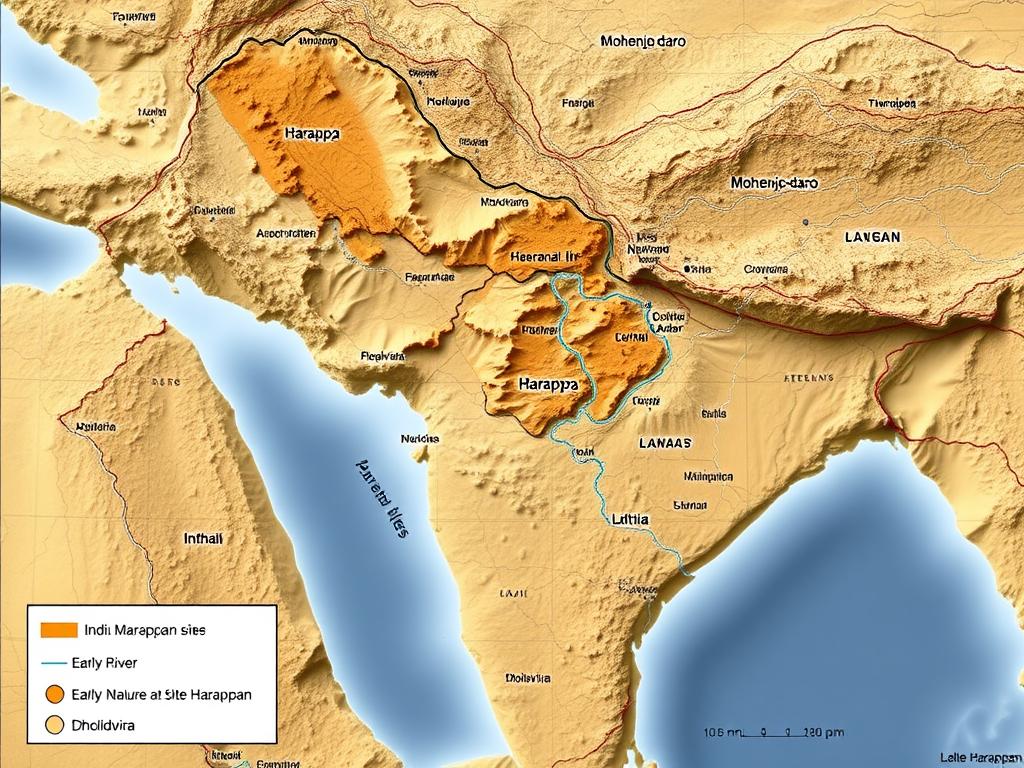
Major Cities of the Harappan Civilization
Harappa
Located in Punjab, Pakistan, Harappa was the first discovered city that gave the civilization its name. Excavations revealed granaries, defensive walls, and evidence of craft production. The city’s estimated population was between 40,000-50,000 people.
Mohenjo-daro
Situated in Sindh, Pakistan, Mohenjo-daro (“Mound of the Dead”) was the largest Harappan city. Its most famous features include the Great Bath, a sophisticated drainage system, and the discovery of artifacts like the Dancing Girl bronze statue and the Priest-King sculpture.
Lothal
Located in Gujarat, India, Lothal served as an important port city with the world’s earliest known dock. It was a vital center for trade and bead manufacturing, with evidence of a sophisticated water management system.
Dholavira
Situated in Gujarat’s Rann of Kutch, Dholavira is known for its sophisticated water conservation systems, monumental architecture, and one of the few examples of Harappan signboards. In 2021, it became a UNESCO World Heritage Site.
Deepen Your Understanding of Ancient India
Want to explore the complete chronology of the Harappan Civilization? Our detailed timeline includes all major discoveries, developments, and theories about this fascinating Bronze Age culture.
Urban Planning and Architecture
The Harappan Civilization’s most remarkable achievement was perhaps its sophisticated urban planning. Cities were meticulously designed with grid-pattern streets, standardized building materials, and advanced public infrastructure that was unparalleled for its time.
City Layout and Structure
Harappan cities typically followed a dual-zone pattern: a raised “citadel” or acropolis to the west that housed public buildings, and a lower residential area to the east. Streets were laid out in a precise grid pattern, often oriented along cardinal directions, creating rectangular blocks of houses. This level of urban planning suggests a strong central authority with the power to implement and maintain these standards across multiple cities.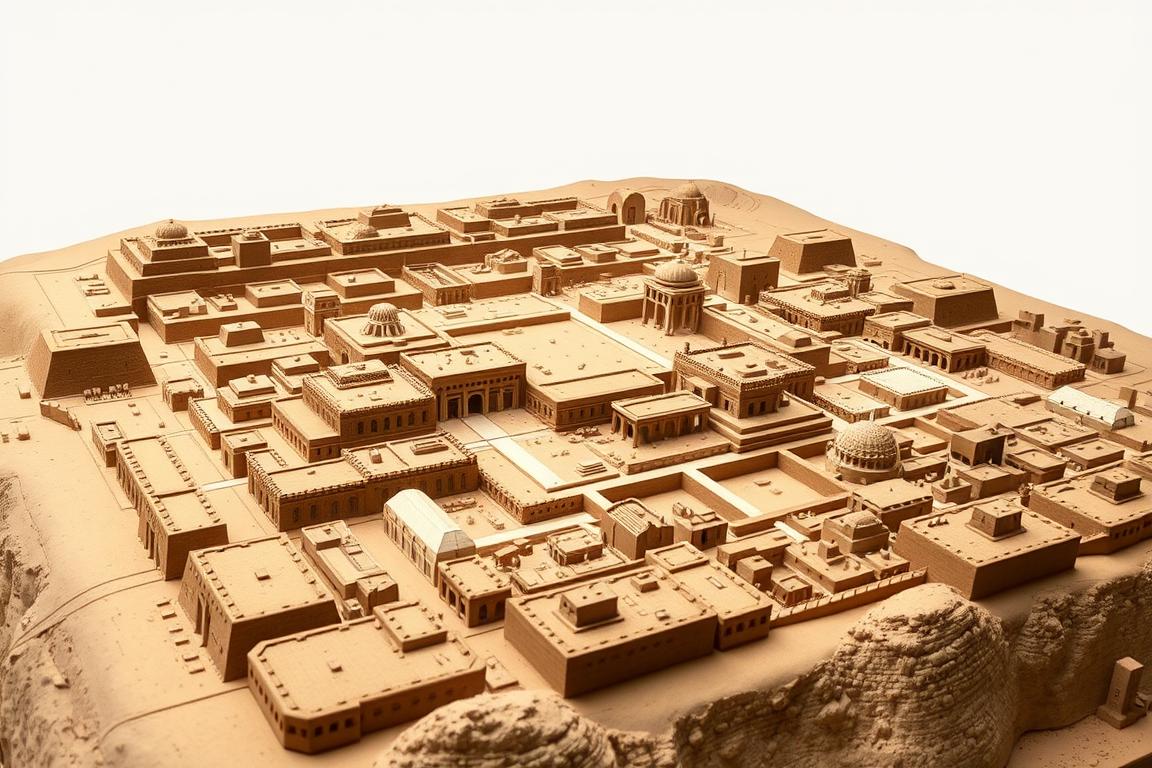
The Great Bath of Mohenjo-daro
The Great Bath at Mohenjo-daro stands as one of the most iconic structures of the Harappan Civilization. This large public bathing facility measures approximately 12 meters by 7 meters and is 2.4 meters deep. Built with carefully laid bricks and sealed with bitumen to make it watertight, the bath featured steps leading down from two sides and rooms surrounding the structure. Scholars believe it may have been used for ritual purification or religious ceremonies, though its exact purpose remains debated.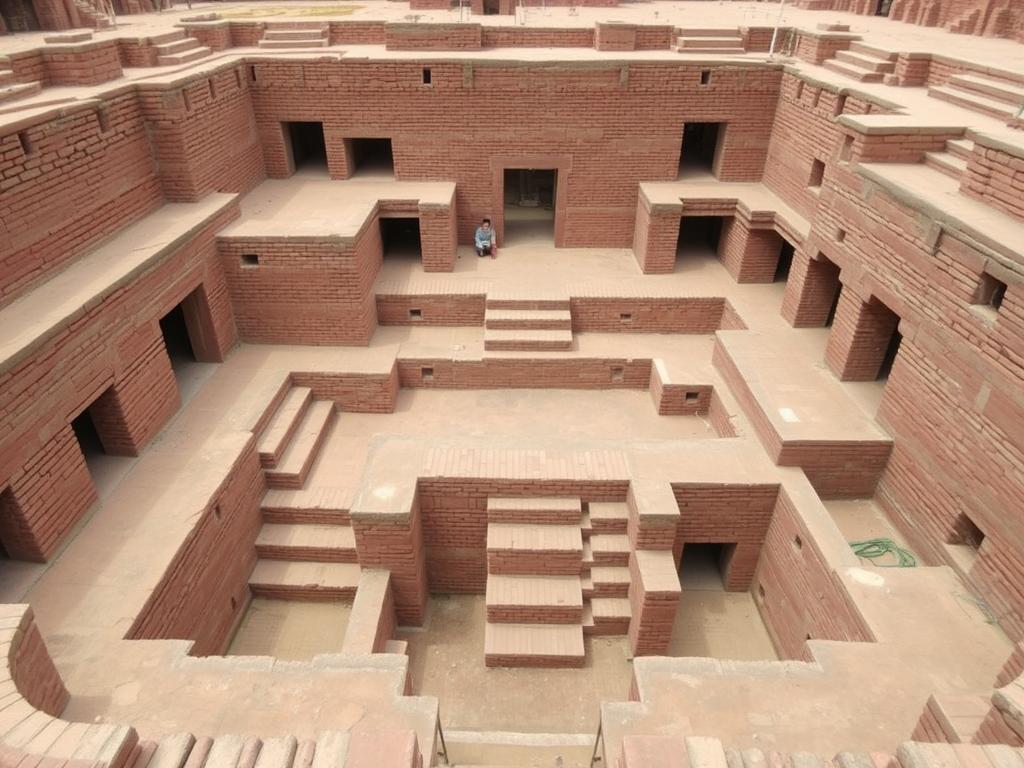
Advanced Drainage Systems
Perhaps the most impressive technological achievement of the Harappan people was their sophisticated drainage system. Every house in major Harappan cities was connected to a covered drainage network that ran alongside the streets. These drains were built with precisely laid bricks and featured access points for cleaning and maintenance. Wastewater from homes was directed to these main drains through smaller channels, demonstrating an understanding of sanitation that wouldn’t be matched in many parts of the world for thousands of years.
- Household Facilities: Most homes featured private bathrooms and toilets connected to the main drainage system.
- Covered Drains: Main streets had covered drainage channels with inspection points for maintenance.
- Water Management: Cities like Dholavira featured sophisticated water harvesting structures, reservoirs, and channels.
Location of Mohenjo-daro, one of the largest cities of the Harappan Civilization
Economy and Trade Networks
The Harappan Civilization developed a complex economy based on agriculture, craftsmanship, and extensive trade networks that reached as far as Mesopotamia and possibly beyond. Their economic activities were supported by standardized weights and measures, suggesting a sophisticated understanding of commerce.
Agriculture and Food Production
Agriculture formed the backbone of the Harappan economy. The fertile floodplains of the Indus River and its tributaries provided ideal conditions for growing a variety of crops. Archaeological evidence has revealed that the Harappans cultivated wheat, barley, peas, sesame, and dates. They were also among the first civilizations to grow cotton, which they used for textile production.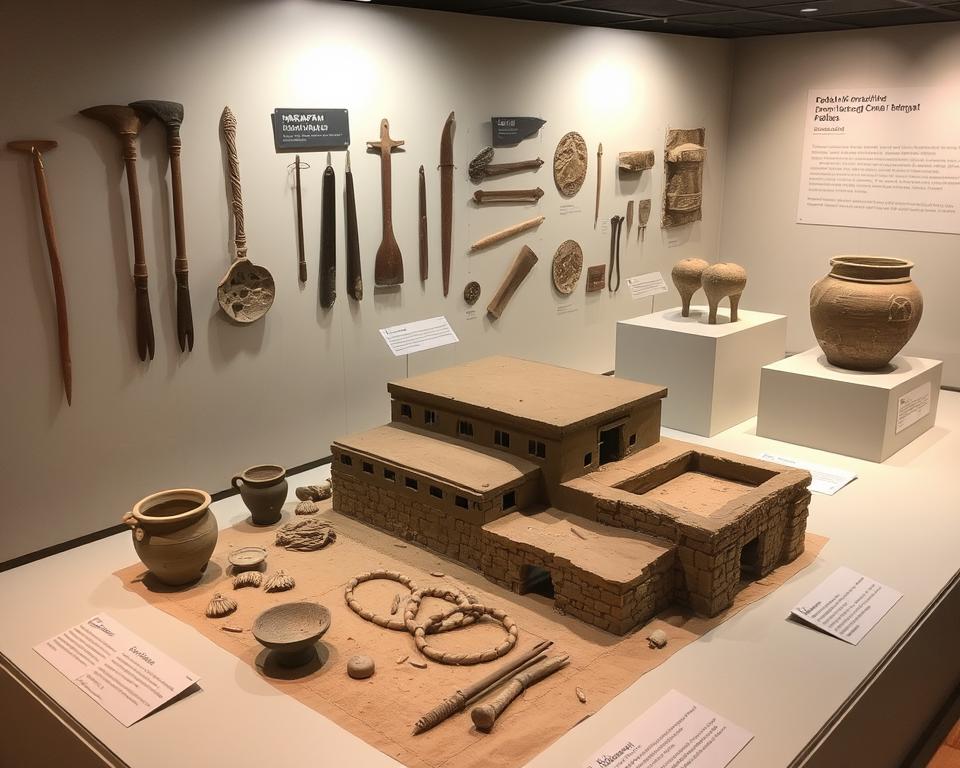
The Harappans developed sophisticated irrigation systems to manage water from the seasonal floods of the Indus River. Evidence of canals and water reservoirs has been found at sites like Shortughai in Afghanistan. They also domesticated animals including cattle, buffalo, sheep, goats, and possibly pigs, which provided both labor and food.
Craft Production and Industry
Harappan cities were centers of specialized craft production. Archaeologists have discovered workshops for various crafts, including:
Pottery
Harappan potters created distinctive red and black pottery with geometric designs. Their pottery was wheel-made and kiln-fired, showing a high level of standardization across different cities.
Metallurgy
Copper and bronze were widely used for tools, weapons, and ornaments. Harappan metalworkers created objects using casting, hammering, and joining techniques that demonstrate considerable skill.
Bead Making
Specialized workshops at sites like Chanhudaro produced beads from carnelian, agate, lapis lazuli, and other stones. The famous “etched” carnelian beads required complex manufacturing techniques.
Trade and Exchange Networks
The Harappan Civilization maintained extensive trade networks that connected them to distant regions. Evidence for this comes from the discovery of Harappan artifacts in Mesopotamia and the presence of foreign materials in Harappan cities.
- Internal Trade: A standardized system of weights and measures facilitated commerce between Harappan settlements.
- Maritime Trade: Port cities like Lothal enabled sea trade with Mesopotamia and the Persian Gulf region.
- Imported Materials: Lapis lazuli from Afghanistan, turquoise from Iran, jade from Central Asia, and gold from Karnataka were all imported.
- Exported Goods: Cotton textiles, ivory, carnelian beads, and possibly timber were exported to Mesopotamia and other regions.
Mesopotamian records refer to trade with a region called “Meluhha,” which many scholars identify as the Indus region. This connection is further supported by the discovery of Harappan seals and other artifacts in Mesopotamian cities like Ur.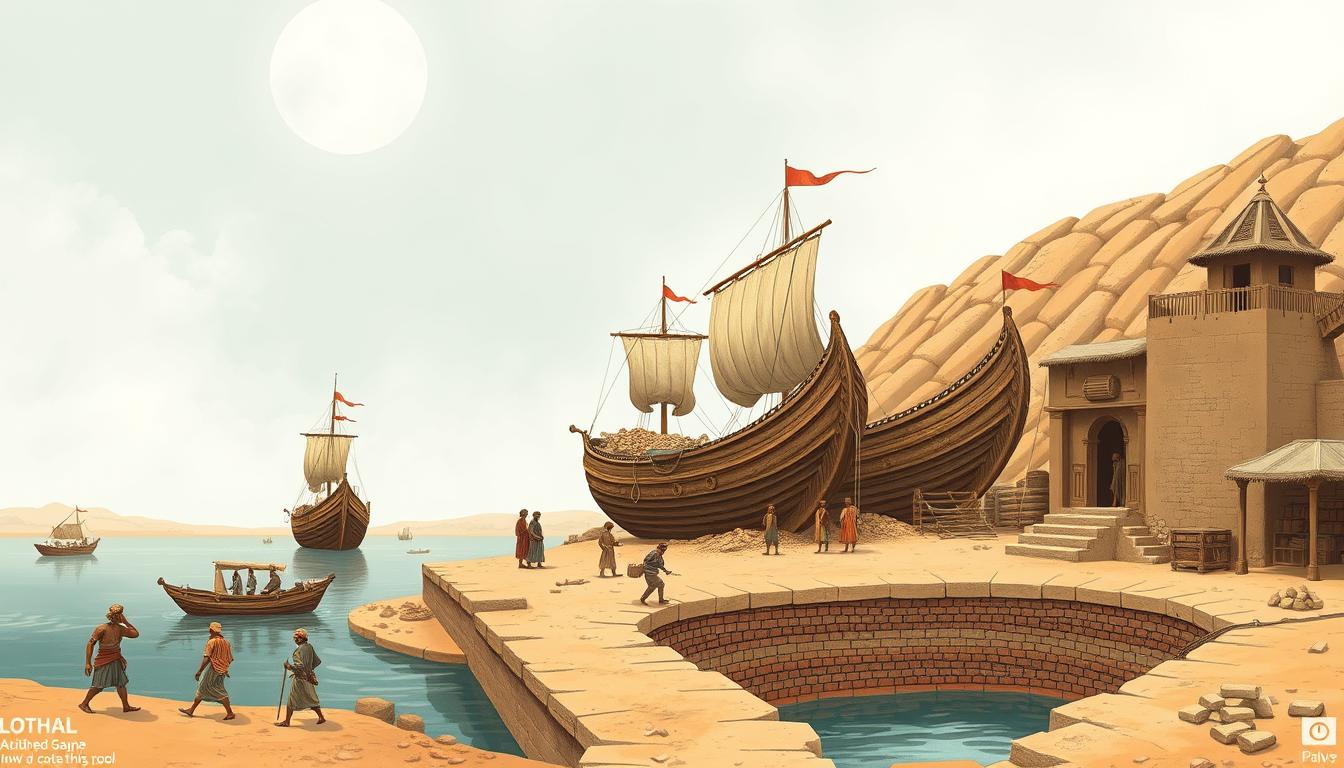
Explore the Ancient Trade Routes
Discover how the Harappan Civilization connected with other ancient cultures through an extensive network of trade routes spanning thousands of miles.
Culture and Religious Practices
The cultural and religious life of the Harappan people remains one of the most intriguing and mysterious aspects of this ancient civilization. Without a deciphered script, archaeologists must rely on material remains to interpret their beliefs and practices.
The Undeciphered Indus Script
One of the most fascinating mysteries of the Harappan Civilization is its writing system. Over 4,000 inscribed objects have been discovered, most commonly seals, but also pottery, copper tablets, and ivory rods. The script contains approximately 400 distinct signs and appears to be written from right to left. Despite numerous attempts by scholars worldwide, the Indus script remains undeciphered, leaving the language and many aspects of Harappan culture shrouded in mystery.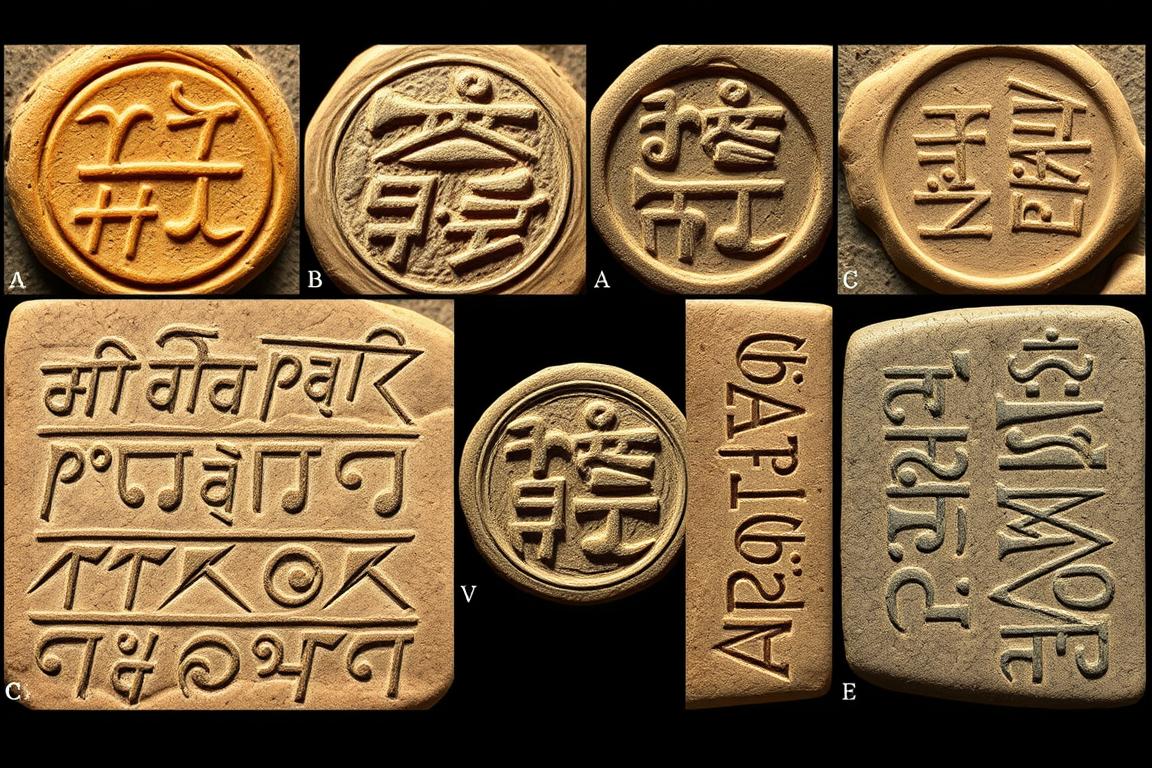
Several theories exist about the nature of the script:
- It may represent a Dravidian language, related to modern South Indian languages.
- It could be an early form of Indo-Aryan language.
- Some scholars suggest it might not represent a full language but rather a more limited system of symbols.
- Recent computational analyses suggest it follows linguistic patterns, supporting the theory that it represents a genuine writing system.
Religious Beliefs and Practices
Without written records, our understanding of Harappan religious beliefs comes primarily from archaeological artifacts and comparisons with later Indian traditions. Several key elements have been identified:
The “Proto-Shiva” Figure
A famous seal from Mohenjo-daro depicts a seated figure surrounded by animals, wearing a horned headdress. Many scholars interpret this as an early representation of the Hindu god Shiva in his aspect as Pashupati (Lord of Animals), suggesting possible continuity between Harappan beliefs and later Hinduism.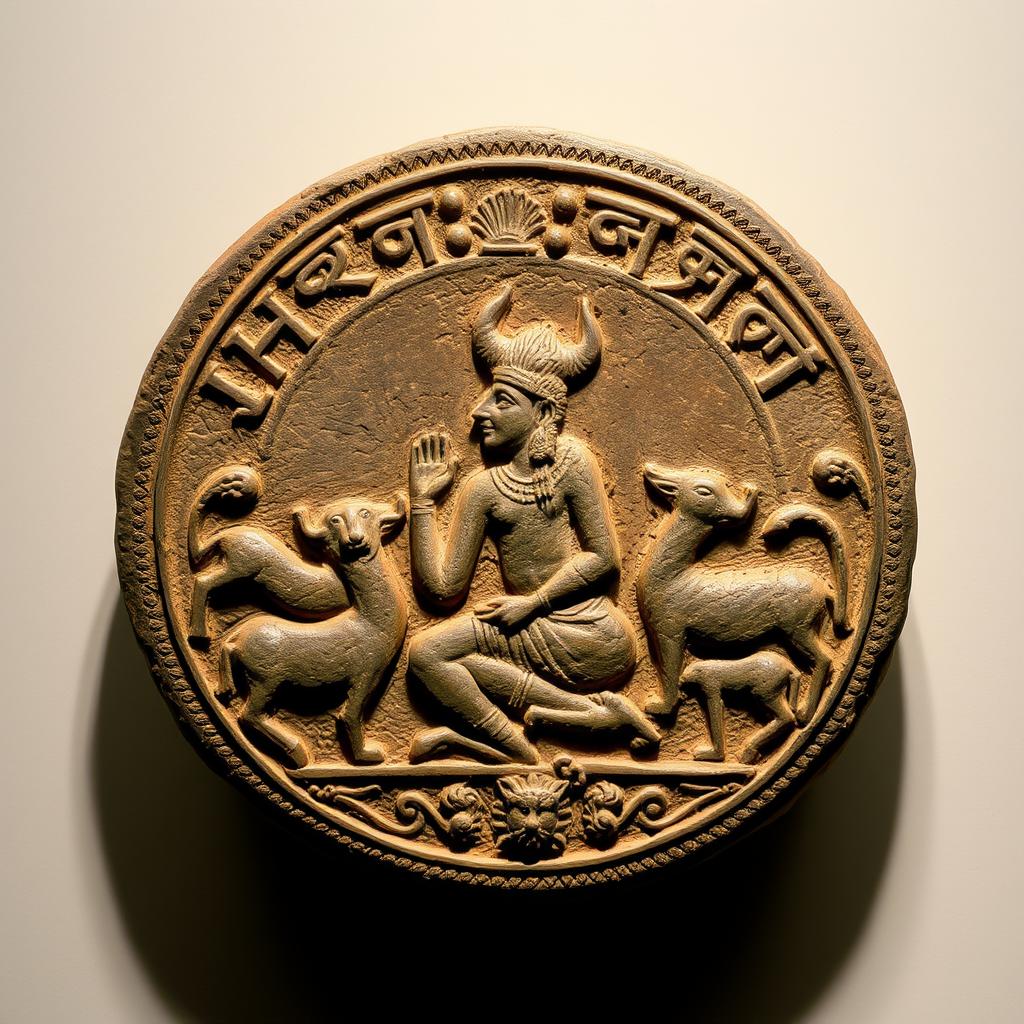
Mother Goddess Worship
Numerous female figurines have been discovered, suggesting the worship of a mother goddess associated with fertility. These terracotta figurines often feature elaborate headdresses and jewelry, emphasizing their importance in Harappan religious practice.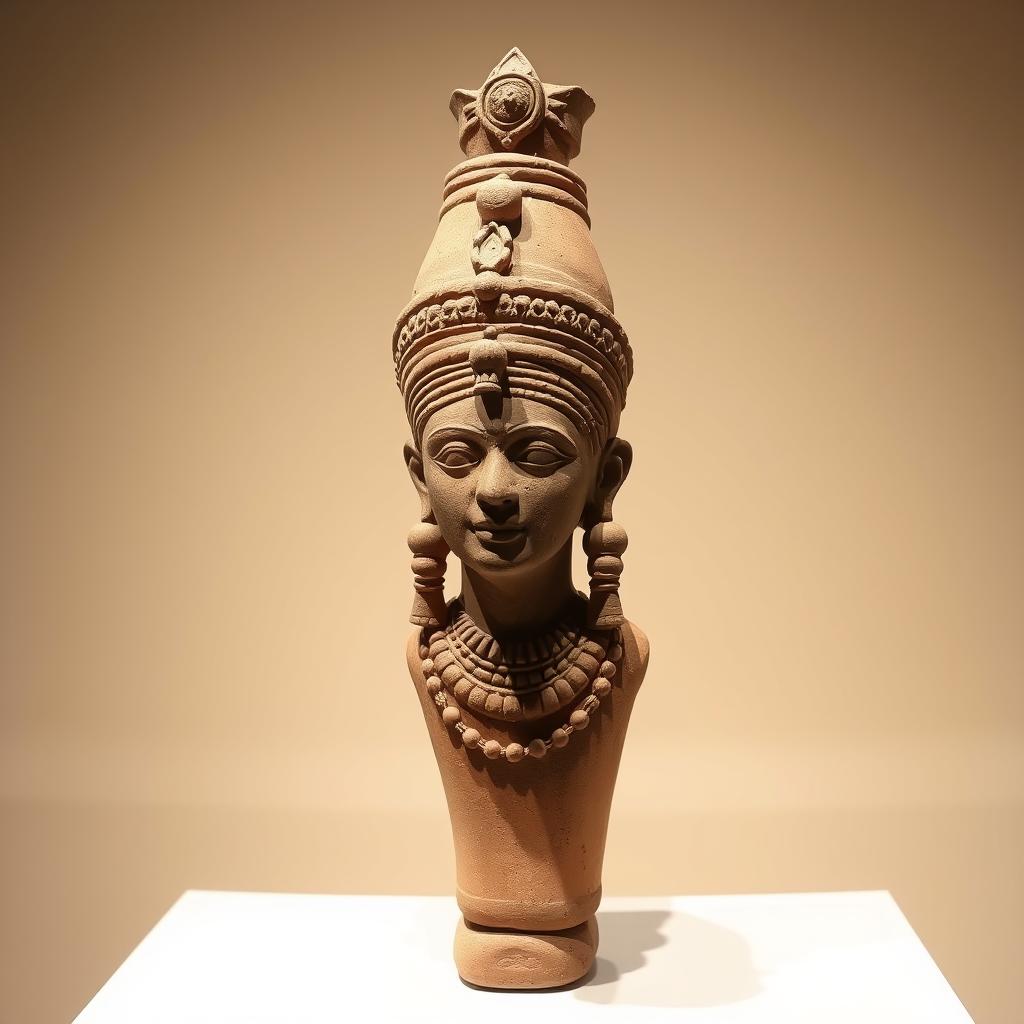
Other religious elements include:
- Fire Altars: Discovered at sites like Kalibangan, suggesting ritual use of fire.
- Tree Worship: Depicted on several seals, particularly the pipal tree.
- Animal Symbolism: Especially the unicorn-like bull that appears on numerous seals.
- Water Rituals: Suggested by the Great Bath and other water-related structures.
Art and Craftsmanship
Harappan artistic expression is best represented through small objects rather than monumental art. Their craftsmanship shows remarkable skill and aesthetic sensibility:
The Dancing Girl
This small bronze figurine from Mohenjo-daro, standing just 10.8 cm tall, depicts a young woman in a confident pose. Cast using the lost-wax method, it demonstrates sophisticated metallurgical skills and a keen observation of human form.
The Priest-King
This steatite sculpture from Mohenjo-daro shows a bearded man wearing a headband and cloak with trefoil patterns. Despite its small size (17.5 cm), it conveys dignity and authority through its detailed craftsmanship.
Animal Figurines
Terracotta figurines of bulls, elephants, and other animals show the Harappans’ skill in capturing animal forms. These may have served as toys, religious objects, or decorative items.
Theories About the Decline
The once-thriving cities of the Harappan Civilization began to decline around 1900 BCE, and by 1300 BCE, most had been abandoned. This gradual decline remains one of archaeology’s great mysteries, with several competing theories attempting to explain what happened to this sophisticated urban society.
Climate Change and Environmental Factors
Recent scientific evidence strongly suggests that climate change played a significant role in the civilization’s decline:
- Shifting Monsoon Patterns: Paleoclimatic studies indicate that the monsoon patterns shifted eastward around 1900 BCE, reducing rainfall in the Indus region.
- River Changes: The Ghaggar-Hakra river system (possibly the ancient Sarasvati mentioned in Vedic texts) appears to have dried up or significantly reduced in flow.
- Deforestation: Evidence suggests extensive deforestation may have occurred to provide fuel for brick-making and metallurgy, potentially leading to environmental degradation.

Social and Economic Factors
Internal factors may have contributed to the civilization’s decline:
Trade Disruptions
Archaeological evidence shows a decline in long-distance trade with Mesopotamia around 1900 BCE, possibly due to political changes in that region. This disruption may have weakened the economic foundation of Harappan cities.
Political Fragmentation
The uniformity of earlier periods gave way to regional variations, suggesting a breakdown in central authority. This may have led to reduced maintenance of crucial infrastructure like irrigation systems and flood controls.
Migration and Cultural Transformation
Rather than a catastrophic collapse, evidence suggests a gradual transformation:
- Eastern Shift: Population appears to have shifted eastward toward the Ganges Plain, following changing rainfall patterns.
- Rural Transition: Urban centers declined while rural settlements continued, suggesting a shift from urban to rural lifestyle.
- Cultural Continuity: Many elements of Harappan material culture continued in modified forms in later periods.
The outdated “Aryan Invasion Theory,” which proposed that Indo-Aryan invaders destroyed the Harappan cities, has been largely discredited. Modern evidence suggests a more complex process of migration, cultural exchange, and gradual transformation rather than violent conquest.
“The end of the Indus civilization was not a sudden collapse but a slow transformation. As cities declined, their cultural elements dispersed and were incorporated into new cultural syntheses across the region.”
– Jonathan Mark Kenoyer, Archaeologist
Legacy and Modern Research
The Harappan Civilization, despite its mysterious decline, left an enduring legacy that continues to influence South Asian culture. Modern archaeological research is constantly uncovering new insights about this remarkable Bronze Age society.
Cultural Continuities
Many elements of Harappan culture appear to have survived in later South Asian traditions:
- Religious Practices: Symbols like the pipal tree, water rituals, and possibly early forms of deities like Shiva continued into later Hinduism.
- Craft Traditions: Techniques for bead-making, pottery, and textile production show continuity with later Indian crafts.
- Agricultural Practices: Many of the crops first cultivated by Harappans, including cotton, remain important in South Asian agriculture.
- Yoga and Meditation: Some scholars interpret certain Harappan seals as depicting early yoga postures, suggesting possible continuity with later practices.
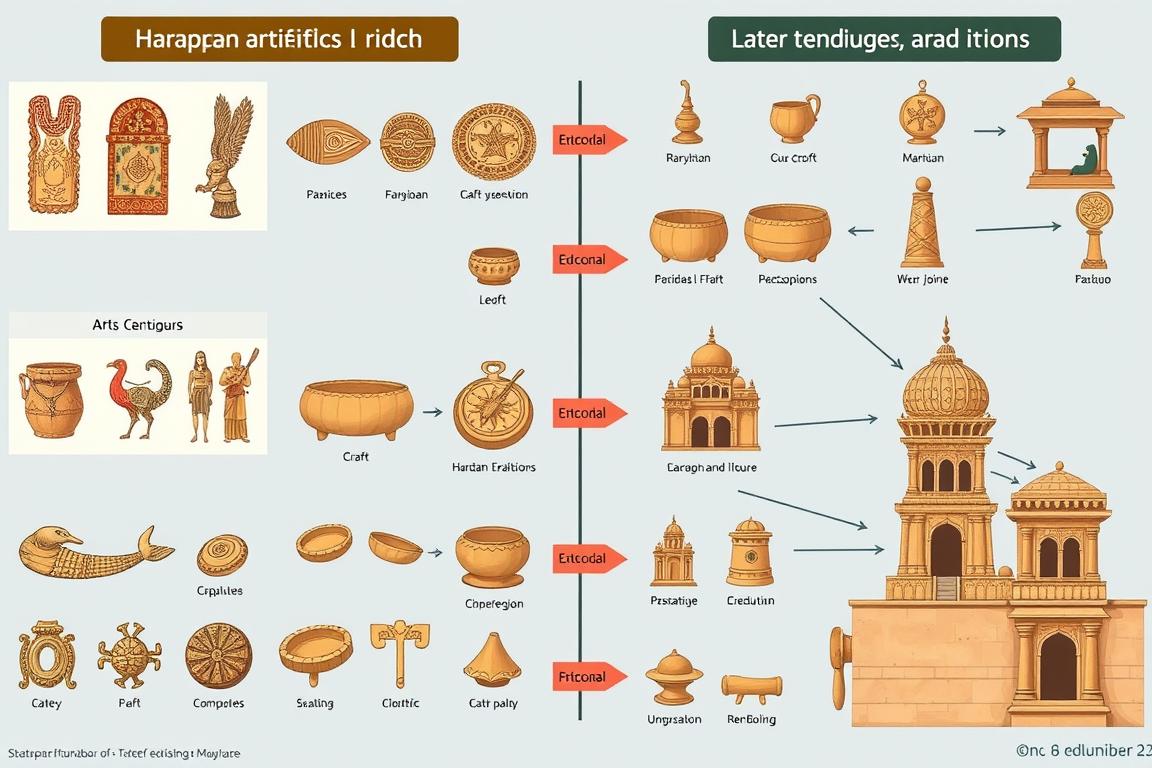
UNESCO World Heritage Sites
Several Harappan sites have been recognized for their outstanding universal value:
Mohenjo-daro
Designated a UNESCO World Heritage Site in 1980, Mohenjo-daro faces conservation challenges due to salt erosion, groundwater, and climate factors.
Harappa
Though not yet a World Heritage Site, Harappa is on Pakistan’s tentative list and remains a crucial archaeological site for understanding the civilization.
Dholavira
Added to the UNESCO list in 2021, Dholavira represents one of the most well-preserved Harappan cities, with remarkable water conservation structures.
Recent Discoveries and Research
Archaeological research continues to reveal new insights about the Harappan Civilization:
- Genetic Studies: Recent DNA analysis of skeletal remains is providing new information about the ancestry and population movements of Harappan people.
- Climate Research: Advanced paleoclimatic studies are clarifying how environmental changes affected the civilization’s development and decline.
- Underwater Archaeology: Explorations in the Gulf of Khambhat (Cambay) have identified potential submerged Harappan sites, suggesting the coastline was different during the Bronze Age.
- Script Decipherment Efforts: Computational approaches using artificial intelligence are bringing new methodologies to the challenge of deciphering the Indus script.
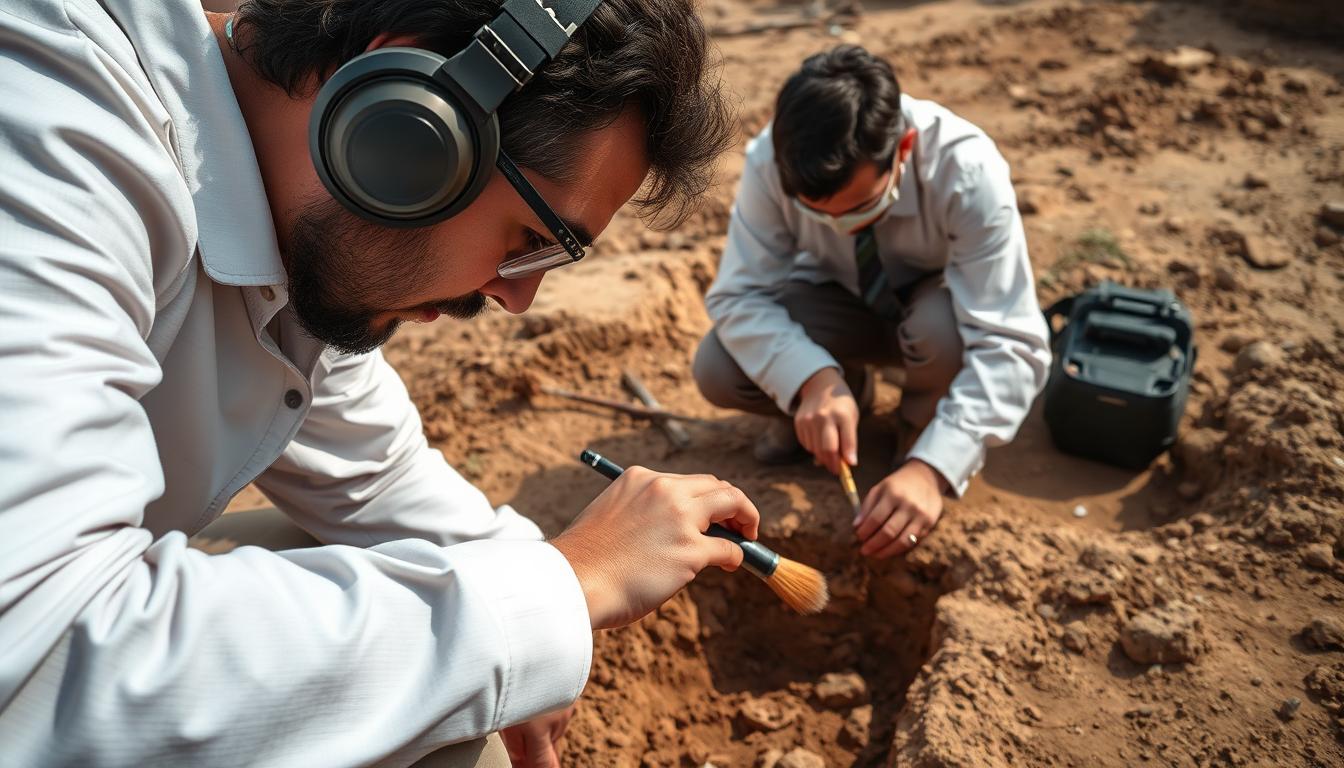
Did You Know? The Harappan Civilization’s drainage systems were so advanced that similar technology wouldn’t be seen again in the region until the modern era. Their urban planning concepts, including grid-pattern streets and standardized building materials, anticipated modern urban design principles by thousands of years.
Stay Updated on Ancient Discoveries
Join our community of history enthusiasts to receive the latest updates on archaeological discoveries, research breakthroughs, and insights about the Harappan Civilization and other ancient cultures.
Conclusion
The Harappan Civilization represents one of humanity’s greatest achievements—a sophisticated urban society that flourished for nearly two millennia before gradually transforming. Its carefully planned cities, advanced technologies, extensive trade networks, and artistic achievements rival those of ancient Egypt and Mesopotamia, despite receiving far less attention in popular understanding of world history.
What makes the Harappan Civilization particularly fascinating is the combination of what we know and what remains mysterious. The undeciphered script tantalizes us with the possibility of one day reading the Harappans’ own words. The precise nature of their political organization, religious beliefs, and the exact causes of their decline continue to inspire archaeological research and scholarly debate.
As modern technology enables new approaches to studying this ancient society, our understanding continues to evolve. The legacy of the Harappan Civilization lives on not only in the archaeological remains that dot the landscape of Pakistan and India but also in the cultural continuities that connect this Bronze Age society to the modern inhabitants of South Asia. In studying the Harappan Civilization, we gain valuable insights into human ingenuity, adaptability, and the complex interplay between environment, technology, and society that continues to shape our world today.
